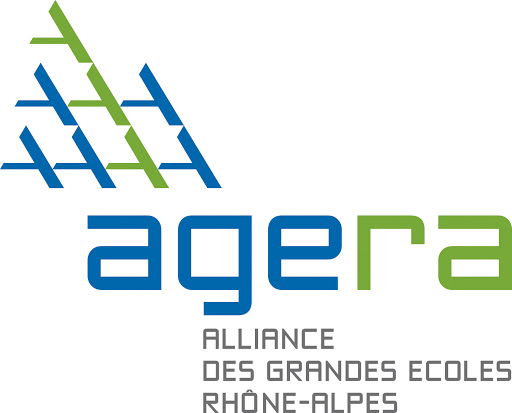- Homepage
- ESDES’s blog
- Research
- Collaborative Transportation Planning of Multiple Carriers with Reserved Request
Elham Jelodari Mamaghani
3 min.
26 January 2023
Context
Since the beginning of the 21st century, the vital role of the Internet and e-commerce in buying and selling products has provided a huge and increasing demand for less-than-truckload (LTL) shipments. In fact, collaborative logistics (CL) is an effective approach to reducing the number of vehicles used, particularly the number of empty backhaul vehicles (Li et al., 2016 and Cruijssen et al., 2007). Carrier collaboration is usually realized by exchanging requests among multiple carriers. The challenge for such a collaborative effort is in finding a good balance between the requests assigned to each less-than-truckload (LTL) carrier and its available transportation capacity to serve the requests. To ensure that such collaboration is sustainable, all participating carriers must benefit from it (Hernandez and Peeta, 2010). In practice, there are two types of requests: reserved requests and exchangeable requests. The reserved requests of each carrier must be served by the carrier itself, whereas its exchangeable requests can be served by other carriers. The main issues with this approach are optimally assigning requests to the carriers and determining their vehicle routes to serve their assigned requests.
Suggested solution
The issues mentioned above can be solved by a centralized planning approach for carrier collaboration in a less-than-truckload transportation environment, where each request is a pickup and delivery request with a time window for both pickup and delivery points a price is paid by a shipper for serving the request. This gives rise to a multi-carrier pickup and delivery problem with time windows and reserved requests, a new vehicle routing problem.
The appropriate algorithm is Large Neighborhood Search (ALNS). The ALNS procedure consists of multiple phases. In addition, local search-based post-optimization is applied at the end of each phase in order to further improve the quality of the final solution obtained by the ALNS. The performance of the proposed algorithm is evaluated by comparing it with commercial solver CPLEX on benchmark instances. Numerical results show that our algorithm can obtain an optimal or a near-optimal solution in a computation time much less than that of CPLEX.
Firstly, we design multiple ruin and repair operators by considering two different types of requests - reserved requests and exchangeable requests. Secondly, we use different initial solutions in multiple restarts of our ANLS procedure to diversify the search in order to obtain a high-quality solution. Thirdly, to enhance the diversification, our ALNS procedure is composed of successive phases with multiple iterations in each phase, where different phases use different policies for the selection of the requests to remove and the requests to reinsert. Finally, to enhance the intensification, we use the local search with four moves to further improve the current solution at the end of each phase.
Figure 1. shows clearly the sharing of requests among depots in collaborative transportation planning.

Fig1. Transportation network before and after collaboration
Conclusion
A new feature of centralized collaborative transportation planning is that each carrier has reserved requests with pickup and delivery point which makes the problem to be closed to the real world. Hence the problem was studied and sharing requests to the carries were determined. In the future, we need to design a sustainable collaborative transportation by including the minimization green house gases and maximization customers satisfactions.
Elham Jelodari Mamaghani is a teacher researcher at Esdes Business School
References
Aksen, D., Kaya, O., Salman, F.S. and Tü ncel, Ö. (2014). An adaptive large neighborhood search algorithm for a selective and periodic inventory routing problem. European Journal of Operational Research, 239(2), 413-426.
Chen, H. (2016). Combinatorial clock-proxy exchange for carrier collaboration in less than truck load transportation. Transportation Research Part E, 91, 152-172.
Cruijssen, F., Cools, M. and Dullaert, W. (2007). Horizontal cooperation in logistics: opportunities and impediments. Transportation Research Part E: Logistics and Transportation Review, 43(2), 129-142.
Hernandez, S. and Peeta, S. (2010). Less-than-Truckload Static Single-Carrier Collaboration Problem. Transportation Research Board 89th Annual Meeting, January 10-14, n° 10-2574, Washington, USA. https://trid.trb.org/view/910608
Li, Y., Chen, H. and Prins, C. (2016). Adaptive large neighborhood search for the pickup and delivery problem with time windows, profits, and reserved requests. European Journal of Operational Research, 252(1), 27-38.
Ropke, S., Pisinger, D. (2006). An adaptive large neighborhood search heuristic for the pickup and delivery problem with time windows. Transportation Science, 40(4), 455-472.
Yazdani, M., Zandieh, M., Tavakkoli-Moghaddam, R. and Jolai, F. (2014). Two meta-heuristic algorithms for the dual-resource constrained flexible job-shop scheduling problem. Scientia Iranica, 22(3), 1242-1257.










